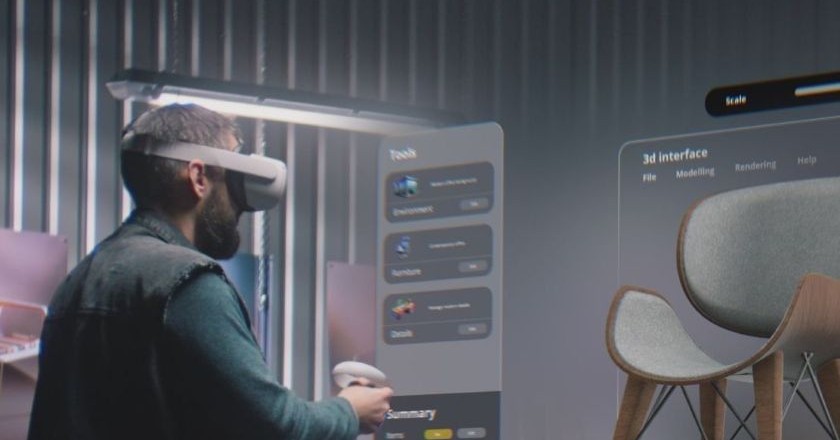We’ve all fallen for discounts, but they don’t guarantee anything beyond a transaction. What if the real way to boost sales was by investing in a lasting retail customer experience?
The journey a customer takes—from discovery to purchase and beyond—has a far greater impact on their likelihood to return than any one-time discount. Focusing on creating a personalized, seamless experience at every touchpoint helps build trust, foster repeat business, and, ultimately, drive long-term growth.
Instead of relying on discounts to attract customers, retailers should prioritize crafting an experience that resonates with their audience. This requires understanding not just the products they buy, but also how they shop, what they need, and how to make them feel valued every step of the way.
Why the Retail Customer Experience Journey Is More Valuable Than Discounts
Discounts might catch a shopper’s eye, but it’s the overall experience that makes them come back. Here’s why focusing on the experience is the key to sustainable retail growth.
Why Discounts Only Bring Short-Term Gains, While Loyalty Lasts Forever
Discounts can create an instant spike in sales, but they come at a cost. While they attract customers in the moment, they don't foster long-term relationships. When customers are motivated solely by price, they often shop around for the next best deal—and once the discount disappears, so might they.
On the other hand, customer loyalty is built on trust, positive experiences, and consistent value. A loyal customer base doesn’t need a constant stream of discounts to keep coming back; they return because they feel connected to your brand and trust that their needs are understood. Loyalty isn’t about a quick transaction—it’s about creating a bond that lasts over time, leading to repeat business, higher lifetime value, and brand advocacy.
Building this type of loyalty takes time, but the rewards are far greater than any one-time discount. Instead of chasing immediate sales with markdowns, investing in an experience that encourages customers to keep coming back is what truly drives long-term growth.
The Secret to Customer Loyalty: It’s Not About Price, It’s About Connection
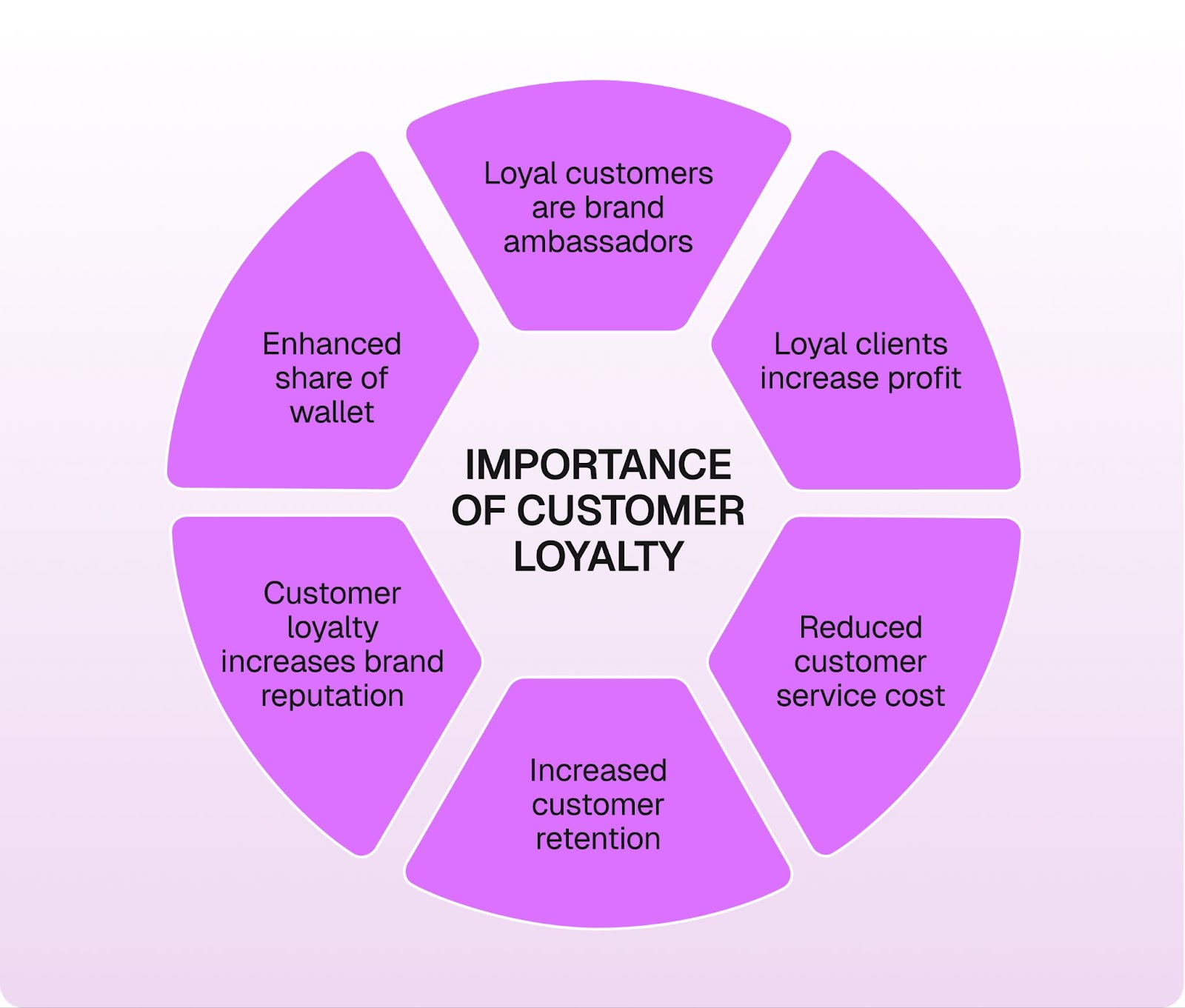
When it comes to customer loyalty, the price is just one piece of the puzzle. Customers don’t stick around just for a great deal—they stay because they feel connected to the brand. True loyalty is built when customers trust you to meet their needs, not just offer them discounts.
A personalized experience that resonates with customers on a deeper level is what keeps them coming back. This could mean understanding their preferences, anticipating their needs, or simply offering exceptional service at every step. When customers feel like you’re putting effort into building a relationship with them, they’re more likely to choose you over competitors, regardless of price.
Loyalty isn’t transactional. It’s about emotion, experience, and relevance. By connecting with your customers on a personal level and consistently meeting their expectations, you’re creating a bond that no discount can ever replace.
How to Create a Retail Customer Experience Journey That Customers Will Remember
The customer journey doesn’t end with a purchase—it’s just the beginning. Here’s how to craft an experience that sticks with your customers long after they’ve left your store.
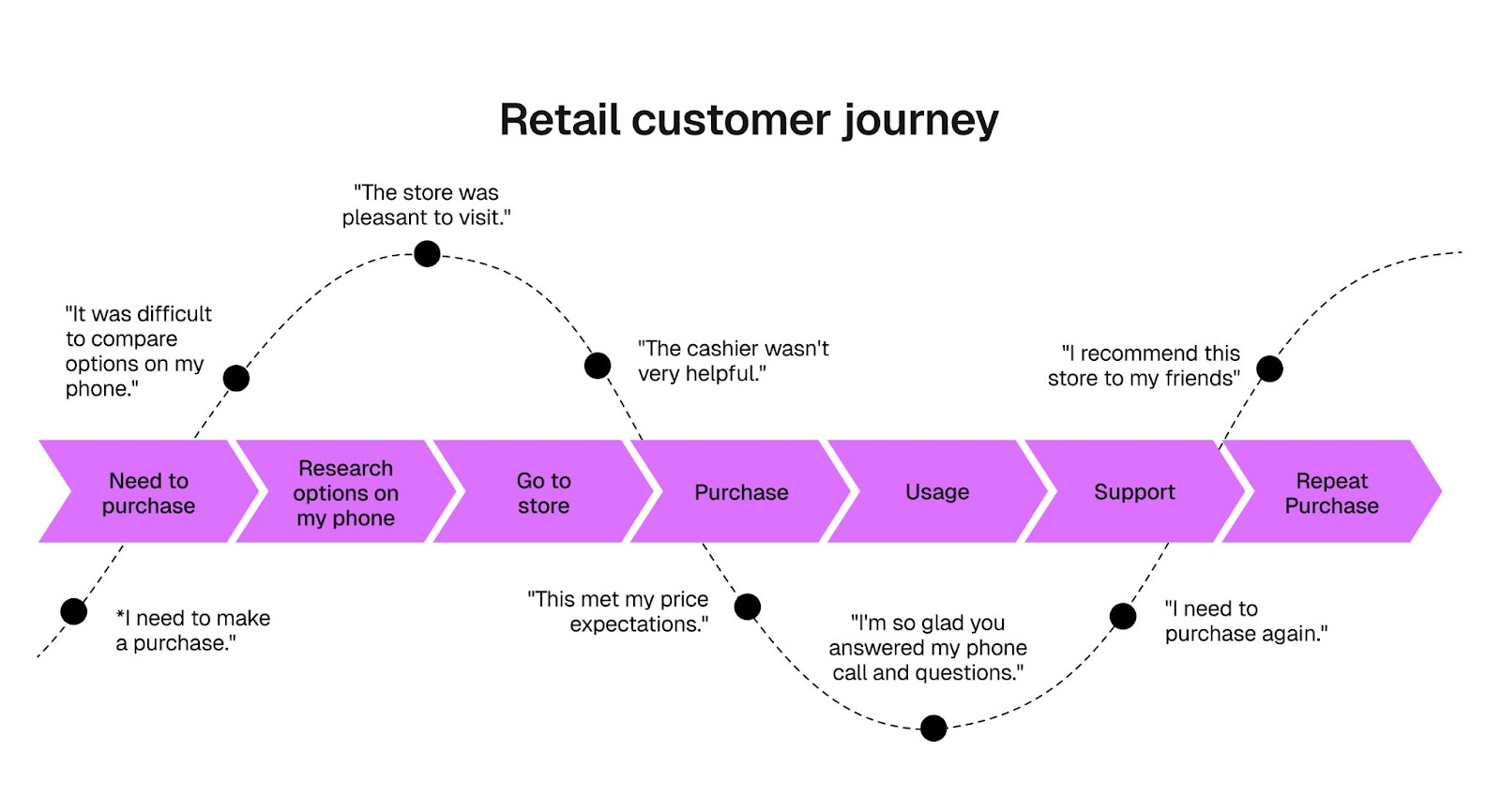
The Power of Personalization in Making Every Customer Feel Special
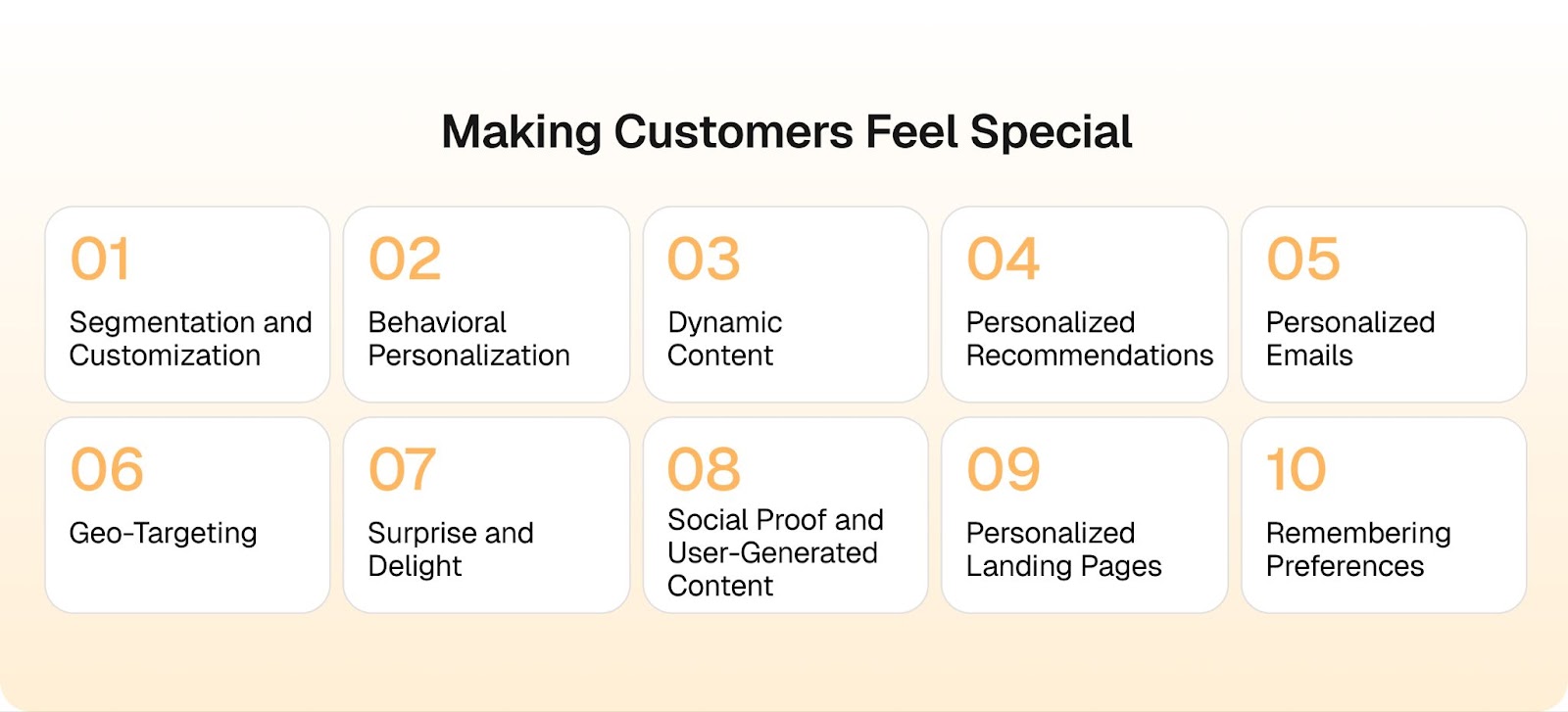
Today’s customers expect more than just great products—they expect individualized service that reflects their preferences and needs. This is where tools like Evoneer’s AI Store Assistant come in, empowering your sales team to deliver personalized service in real-time.
The AI assistant gives sales associates immediate access to real-time product details, from pricing to availability and delivery schedules. This means staff can instantly offer tailored product recommendations based on the customer's needs, whether they're looking for a specific style of furniture or seeking complementary products.
With Evoneer's AI Store Assistant, the customer’s experience is smoother and more personal, as associates can instantly match their preferences with the right products without leaving their side. This not only makes the customer feel valued, but it also builds trust—because they know you understand exactly what they need.
How to Ensure a Smooth, Consistent Experience Across Every Channel
Customers expect a seamless experience, whether they’re shopping online, in-store, or via mobile. Ensuring a smooth and consistent journey across all channels requires alignment in systems, messaging, and service. To achieve this, retailers should:
- Integrate systems across channels: Ensure your POS, inventory, and e-commerce platforms are connected to provide real-time updates on product availability, pricing, and promotions.
- Centralize customer data: Use a CRM system to consolidate customer interactions and preferences, ensuring personalized service, whether the customer is in-store or online.
- Standardize brand messaging: Maintain consistent branding, tone, and messaging across all touchpoints, ensuring that customers receive the same experience wherever they engage with your business.
- Train staff for omnichannel service: Equip your team with the tools and knowledge to provide consistent service, using integrated systems to understand customer needs and provide personalized assistance across platforms.
By focusing on these areas, you’ll be able to create a unified retail customer experience that enhances satisfaction and builds long-term loyalty.
Engaging Customers with Proactive Customer Support
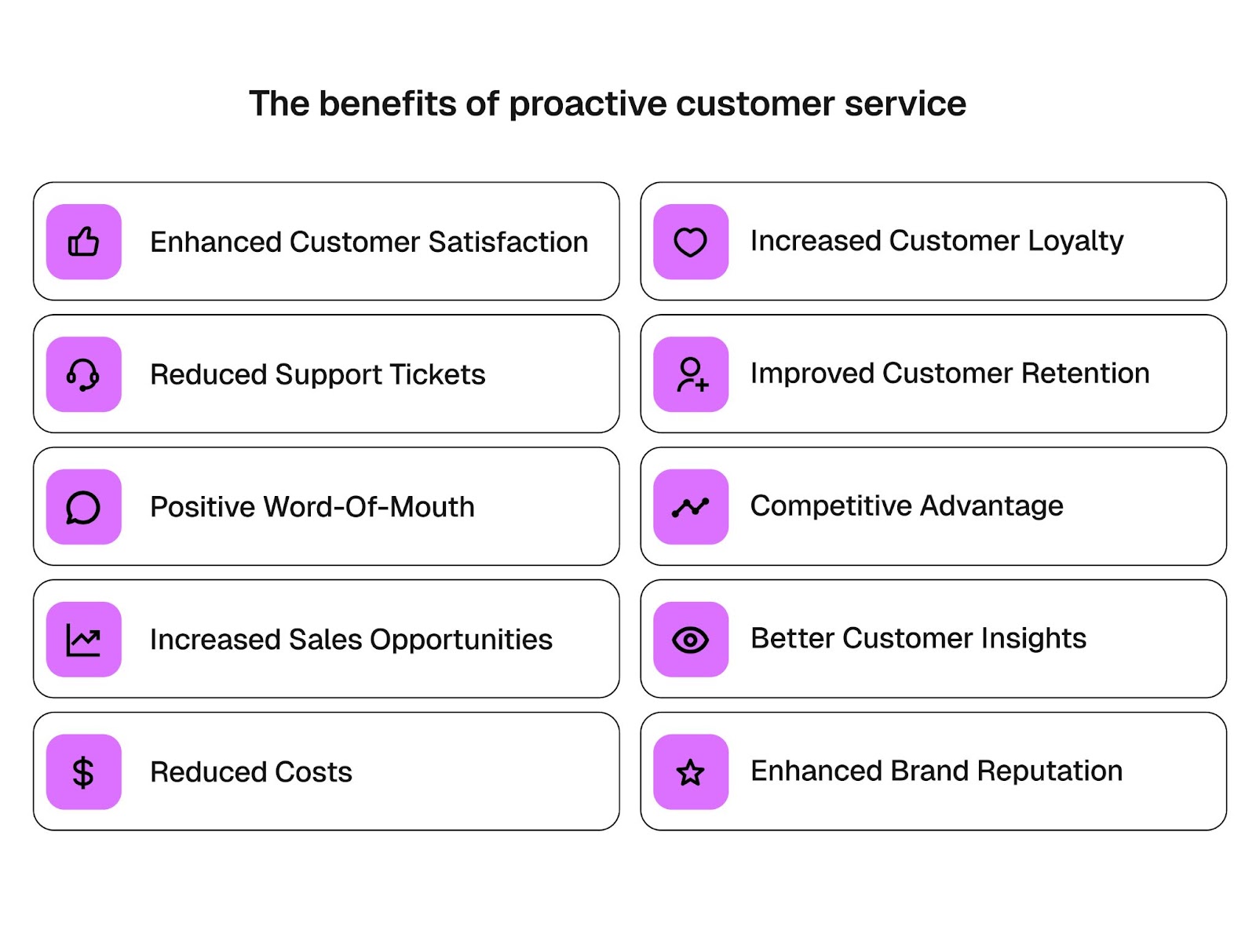
Proactive customer support is about anticipating customer needs before they even ask. Instead of waiting for issues to arise, successful retailers use insights to reach out early, solving potential problems and enhancing satisfaction before customers have to voice concerns.
For example, offering automated follow-ups after a purchase, providing real-time updates on shipping, or anticipating common issues and addressing them upfront can go a long way in building trust. Proactive customer support helps retailers stand out by showing customers that they’re valued—leading to higher engagement and increased loyalty.
By anticipating needs and solving problems before they escalate, proactive customer support ensures that customers feel heard, valued, and more likely to return for future purchases.
Why AI Is the Key to Enhancing the Modern Retail Customer Experience
In a world where attention spans are short, getting the experience right the first time is critical. Let’s look at how AI in retail is transforming the way retailers engage with shoppers.
How AI Drives Personalized Shopping by Predicting Customer Behavior
Here’s how AI works behind the scenes to create a personalized shopping experience tailored just for you:
- Creating a Truly Personalized Shopping Experience
AI helps retailers truly understand their customers by analyzing a mix of past purchases, browsing history, and real-time interactions. This allows retailers to predict what a customer might want next based on their unique preferences and behavior. It’s not just about knowing broad categories of what someone likes, but about tailoring the experience to each individual.
- Offering Product Recommendations Based on Behavior
AI doesn’t stop at analyzing a customer’s purchase history—it also looks at their browsing behavior to suggest products that align with what they’ve already shown interest in. For example, if a customer frequently browses or purchases certain types of furniture, AI will predict and recommend similar or complementary items that match those preferences.
- Proactively Suggesting Products to Drive Engagement
Rather than waiting for customers to search for specific products, AI takes a more proactive approach. It anticipates customer needs and presents personalized recommendations in real-time, both online and in physical stores. Whether a customer is browsing an online store or walking around a physical retail location, AI is there to suggest the right products at just the right moment, eliminating the need for customers to seek out the items themselves.
- Fostering Customer Loyalty Through Personalized Interactions
By continuously offering personalized suggestions and anticipating customer needs, AI ensures that customers feel understood and valued. This creates a deeper emotional connection with the brand, making customers more likely to return for future purchases.
Real-Time Insights: Enhancing the Experience in the Moment
In retail, speed and relevance are critical. Customers expect quick answers to their questions, and how you respond in the moment can determine whether or not they make a purchase. Real-time insights help you act quickly, offering the right information at the right time to keep the experience flowing smoothly.
As previously mentioned, tools like Evoneer’s AI Store Assistant make this possible. The assistant gives sales associates immediate access to product availability, pricing, and delivery schedules, enabling them to respond to customer inquiries without delay. For instance, if a customer asks about delivery times for a particular dining table, the AI assistant allows associates to instantly pull up the most accurate, up-to-date information.
By equipping staff with this real-time data, stores can offer a more personalized, efficient shopping experience, helping customers make decisions faster and feel more confident in their choices.
How Retailers Can Begin Shifting Focus from Discounts to the Customer Journey
Discounts may drive traffic, but they don’t build lasting loyalty. Here's how you can start moving away from price cuts and invest in creating a memorable retail customer experience.
Steps to Evaluate Your Current Customer Engagement Strategy
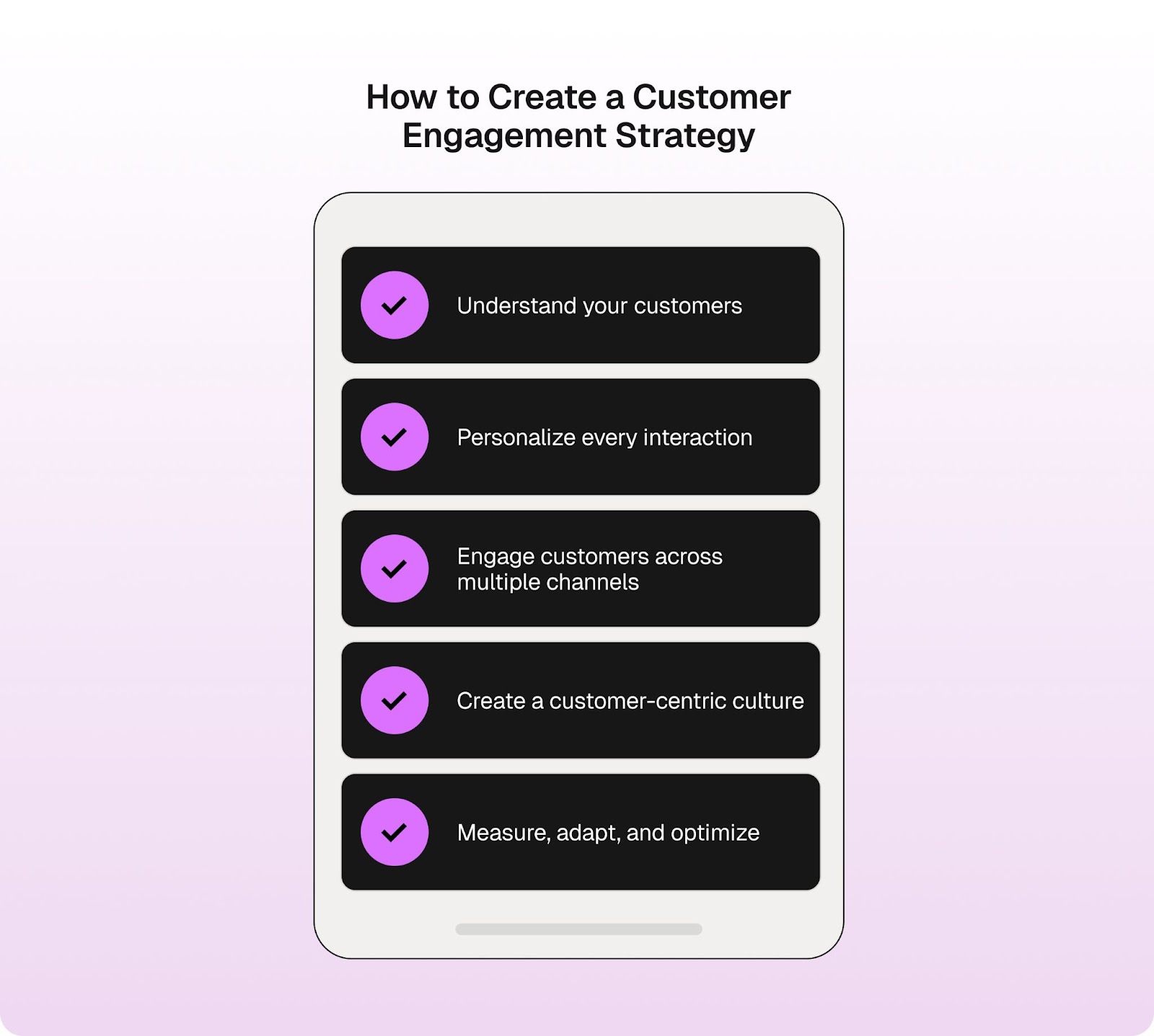
As you begin to shift your focus from discounts to the customer journey, it’s important to first understand where you stand.
- Step 1: Review Customer Touchpoints
The first step in evaluating your customer engagement strategy is to take a closer look at the customer touchpoints, from the very first interaction all the way through post-purchase follow-ups. Are you offering a consistent, personalized experience at each stage of the journey, or is your approach fragmented? Look for any areas where customers might feel neglected or disconnected, whether they’re engaging with your brand online or in-store. Identifying these gaps will help you focus on where improvements can be made to ensure a more cohesive experience.
- Step 2: Analyze Customer Feedback and Behavior
Next, take the time to analyze customer feedback and behavior patterns. Are customers returning for repeat purchases, or are they making one-time transactions and moving on? Pay attention to trends that highlight what keeps customers engaged, as well as what causes them to lose interest or drop off. This valuable insight will help you pinpoint specific areas that need attention and fine-tuning, so you can keep your customers coming back and increase retention.
- Step 3: Assess the Tools and Technologies in Place
Lastly, it’s crucial to assess the tools and technologies you currently have in place. Are these tools helping you track customer interactions, preferences, and behaviors effectively? Or are there gaps in your system that prevent you from offering a truly personalized experience across all channels? Evaluating your tech stack is essential to understanding how well you’re connecting with your customers and identifying where improvements are necessary.
How Retailers Can Begin Shifting Focus from Discounts to the Customer Journey
Implementing technology that enhances the retail customer experience requires a strategic approach. Here’s how to make sure the retail technology solutions you choose align with your goals:
How to Implement Tech Solutions That Put Customer Experience First
- Identify pain points: Start by pinpointing the areas in your customer journey that need improvement. Whether it’s difficulty accessing product info in-store or a complicated checkout process online, understanding these challenges is the first step to finding the right solutions.
- Choose targeted retail technology solutions: Once you’ve identified issues, select technology that specifically addresses them. For example, an AI-powered assistant can help with real-time product recommendations, while a CRM system helps track customer interactions and personalize experiences.
- Ensure cross-channel integration: Choose technology that connects all your platforms. This ensures a consistent experience for your customers, whether they shop online or in-store, and keeps their data synchronized in real time.
- Prioritize scalability: As your business grows, your technology should be able to grow with it. Select retail technology solutions that can handle increased customer volume and provide long-term value without the need for constant upgrades.
- Train your team: Equip your staff with the skills to use these new tools effectively. Ensuring they are trained will enable them to deliver smooth, efficient, and personalized service every time.
Tracking Success: Metrics for Measuring the Impact of Experience
To understand how well your efforts to improve the customer journey are working, it’s essential to track key performance indicators (KPIs) that reflect the true impact of your customer experience. Here are the most important metrics to track:
- Customer Retention Rate: This metric shows how many customers return to your business after their first purchase. An increase in retention indicates that your customer journey efforts are creating lasting loyalty.
- Net Promoter Score (NPS): NPS measures how likely customers are to recommend your store to others. A higher NPS is a direct reflection of a positive, memorable retail customer experience.
- Customer Lifetime Value (CLV): CLV helps you determine how much revenue you can expect from a customer over the long term. It’s an important indicator of whether your customer experience is fostering lasting relationships.
- Customer Satisfaction (CSAT): This metric is gathered through surveys and feedback, showing how satisfied customers are with their experience. Tracking CSAT helps you understand immediate customer sentiment and satisfaction levels.
- Conversion Rate: This is the percentage of visitors or leads that make a purchase. If your retail customer experience is effective, you should see a higher conversion rate as customers move through their journey more smoothly.
By keeping an eye on these KPIs, you’ll gain a better understanding of what’s working and where your retail customer experience can continue to improve.
To sum up, by focusing on building a personalized customer journey, you’re not just increasing sales today, you’re investing in long-term loyalty and sustainable growth. When you make the customer experience your priority, you set the foundation for stronger relationships, higher retention rates, and a brand that stands out in a competitive market.

.png)



















